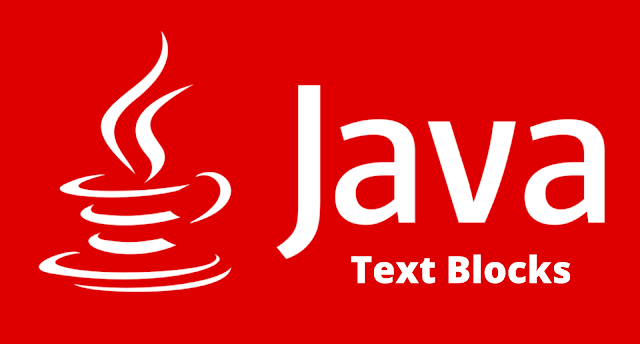Motivation
Embedding formats like XML, JSON or SQL in standard Java Strings can become quite annoying. For example, a simple snippet of JSON with just two keys is barely readable in Java because of required escaping:
String json =
"{\n" +
"\"name\": \"john\",\n" +
"\"age\": 42\n" +
"}";
Text Blocks for the rescue
Using the new text blocks feature, we can rewrite our code to this:
String text = """
{
"name": "john",
"age": "42"
}
""";
Text blocks are opened (and closed) using triple-quotes (“””). The text begins at the next line. After opening a text block, the rest of the line needs to stay empty.
If we print this string to the console we see:
{
"name": "john",
"age": "42"
}
As you might have been noticed, the indentation on the left side has been stripped away. That’s because a text block is processed in three steps:
◉ Line terminators are normalized to the LF character. This avoids problems between different platforms (like windows and unix).
◉ Incidental leading white spaces and all trailing white spaces are removed. Incidental leading white spaces are determined by finding the common number of leading white spaces for all lines.
◉ Escape sequences are interpreted. Text blocks can contain the same escape sequences as standard strings (e.g. \t or \n). Note that two new escape sequences have been added: \s for an explicit space and \<eol> as continuation indicator (more on \<eol> later).
In case we explicitly need leading white spaces we can use the indent() method:
String text = """
{
"name": "john",
"age": "42"
}
""".indent(4);
This adds 4 additional leading spaces to our JSON snippet. So it looks like this:
{
"name": "john",
"age": "42"
}
Alternatively we can remove 4 leading spaces from the closing triple-quotes to produce the same result:
String text = """
{
"name": "john",
"age": "42"
}
"""; // <-- moving this 4 spaces to the left produces 4 additional leading spaces
The new \<eol> escape sequence
With the new \<eol> escape sequence we can split the content of a single line into multiple lines without creating an actual line terminator.
String text = """
1
2 \
3 \
4
5
""";
Results in:
1
2 3 4
5
Escaping triple-quotes
In case we need to write triple-quotes into a text block, only the first quote need to be escaped:
String text = """
Java text blocks start with \"""
""";
This produces:
Java text blocks start with """




0 comments:
Post a Comment